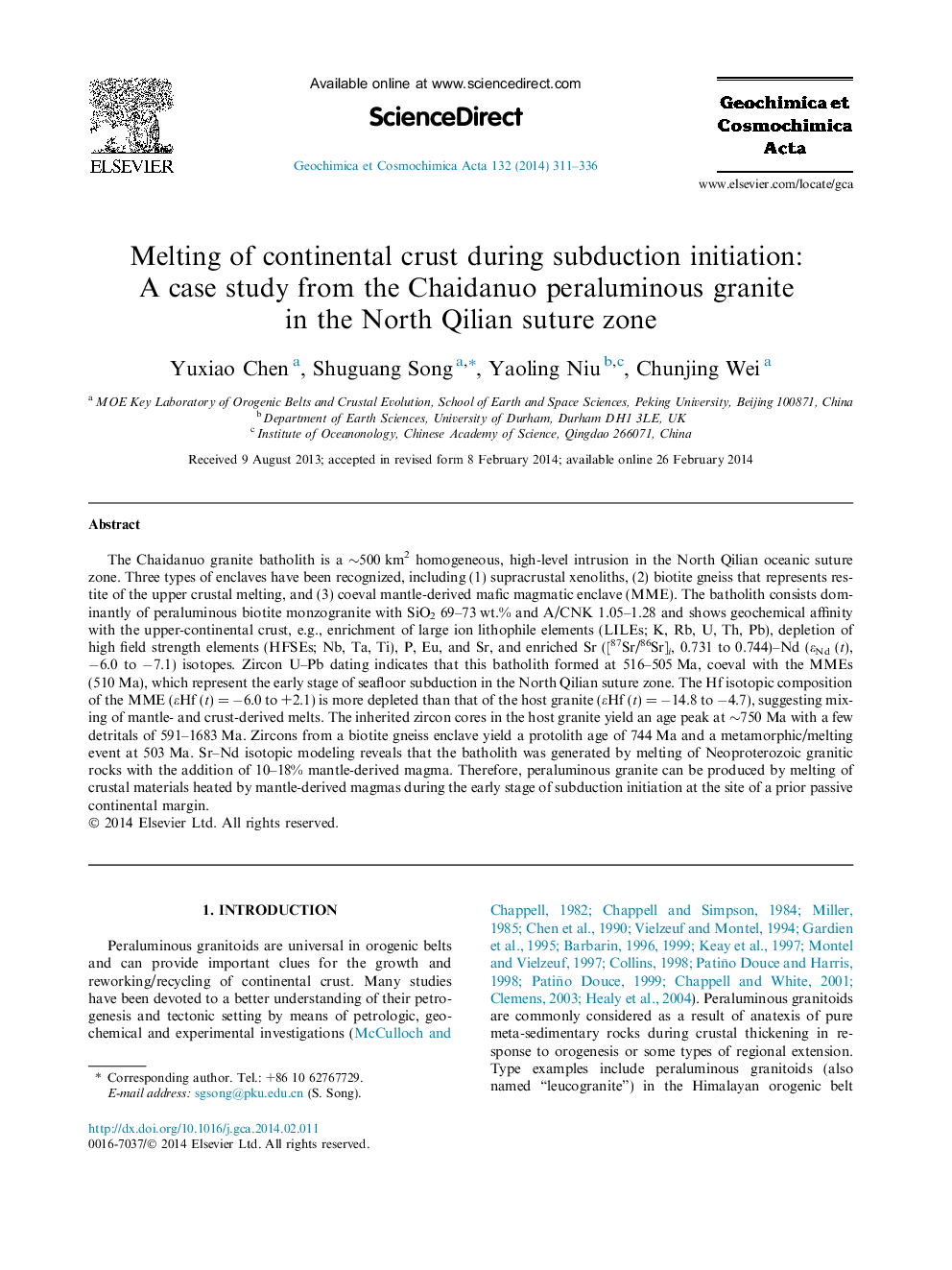| Article ID | Journal | Published Year | Pages | File Type |
|---|---|---|---|---|
| 4702233 | Geochimica et Cosmochimica Acta | 2014 | 26 Pages |
The Chaidanuo granite batholith is a ∼500 km2 homogeneous, high-level intrusion in the North Qilian oceanic suture zone. Three types of enclaves have been recognized, including (1) supracrustal xenoliths, (2) biotite gneiss that represents restite of the upper crustal melting, and (3) coeval mantle-derived mafic magmatic enclave (MME). The batholith consists dominantly of peraluminous biotite monzogranite with SiO2 69–73 wt.% and A/CNK 1.05–1.28 and shows geochemical affinity with the upper-continental crust, e.g., enrichment of large ion lithophile elements (LILEs; K, Rb, U, Th, Pb), depletion of high field strength elements (HFSEs; Nb, Ta, Ti), P, Eu, and Sr, and enriched Sr ([87Sr/86Sr]i, 0.731 to 0.744)–Nd (εNd (t), −6.0 to −7.1) isotopes. Zircon U–Pb dating indicates that this batholith formed at 516–505 Ma, coeval with the MMEs (510 Ma), which represent the early stage of seafloor subduction in the North Qilian suture zone. The Hf isotopic composition of the MME (εHf (t) = −6.0 to +2.1) is more depleted than that of the host granite (εHf (t) = −14.8 to −4.7), suggesting mixing of mantle- and crust-derived melts. The inherited zircon cores in the host granite yield an age peak at ∼750 Ma with a few detritals of 591–1683 Ma. Zircons from a biotite gneiss enclave yield a protolith age of 744 Ma and a metamorphic/melting event at 503 Ma. Sr–Nd isotopic modeling reveals that the batholith was generated by melting of Neoproterozoic granitic rocks with the addition of 10–18% mantle-derived magma. Therefore, peraluminous granite can be produced by melting of crustal materials heated by mantle-derived magmas during the early stage of subduction initiation at the site of a prior passive continental margin.
